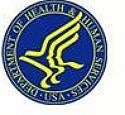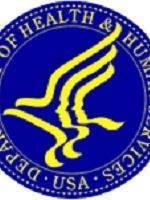Prevention grants to focus on improving health, which can lower costs
The U.S. Department of Health and Human Services announced today the availability of over $100 million in funding for up to 75 Community Transformation Grants. Created by the Affordable Care Act, these grants are aimed at helping communities implement projects proven to reduce chronic diseases – such as diabetes and heart disease. By promoting healthy lifestyles and communities, especially among population groups experiencing the greatest burden of chronic disease, these grants will help improve health, reduce health disparities, and lower health care costs.
“Community Transformation Grants will empower local communities with resources, information, and flexibility to help make their residents healthier,” said HHS Secretary Kathleen Sebelius. “By helping to transform communities at the ground level, these efforts can have a major impact on the health of Americans.”
“It is critical that we sustain our work to develop and spread effective programs that address leading killers like heart disease, cancer, and stroke,” said Dr. Thomas Frieden, director of the Centers for Disease Control and Prevention, which oversees the Community Transformation Grants program. “These funds will allow us to build on successful programs that have helped people lead healthier lifestyles and help us save millions in health care costs in the future.”
Chronic diseases such as heart disease, cancer, stroke, and diabetes are taking a devastating toll on our nation’s health. Seven of every 10 deaths are from a chronic disease – mostly caused by tobacco use, obesity, poor diet, and too little physical activity. Treatment for people with chronic conditions accounts for more than 75-percent of the more than $2 trillion spent on annual U.S. medical care costs. Obesity is a significant health care cost driver; in 2008, about $147 billion of medical bills were weight-related.
Consistent with the law, these grants will focus on five priority areas: 1) tobacco-free living; 2) active living and healthy eating; 3) evidence-based quality clinical and other preventive services, specifically prevention and control of high blood pressure and high cholesterol; 4) social and emotional wellness, such as facilitating early identification of mental health needs and access to quality services, especially for people with chronic conditions; and 5) healthy and safe physical environments.
Successful applicants must use evidence-based strategies and ensure that their activities not only have broad population impact, but also help address health disparities. Examples of projects that could qualify for grants include eliminating food deserts and increasing access to healthy food options, including efforts to improve school nutrition or bring healthier food to corner markets in urban areas. Other examples include promoting blood pressure and cholesterol screenings.
Communities may also address additional areas of disease prevention and health promotion that will contribute to the overall goal of reducing chronic disease rates. These areas include adolescent health; arthritis and osteoporosis; cancer; diabetes; disabilities and secondary conditions; educational and community-based services; environmental health; HIV; injury and violence prevention; maternal, infant, and child health; mental health and mental disorders; health of older adults; oral health; and sexually transmitted diseases.
State and local government agencies, tribes and territories, and state and local non-profit organizations are eligible to apply for Community Transformation Grants. At least 20-percent of grant funds will be directed to rural and frontier areas. Applications are due to the Centers for Disease Control and Prevention in July 2011, with awards expected to be announced near the end of summer. The grants are expected to run for five years, with projects expanding their scope and reach over time as resources permit.
The Community Transformation Grants are one piece of a broader effort by the Obama Administration to address the health and well-being of our communities through initiatives such as the President’s Childhood Obesity Task Force, the First Lady’s Let’s Move! campaign, the National Prevention Strategy, the National Quality Strategy, and HHS’ Communities Putting Prevention to Work program. The Prevention and Public Health Fund, as part of the Affordable Care Act, is supporting this and other initiatives designed to expand and sustain the necessary capacity to prevent disease, detect it early, manage conditions before they become severe, and provide states and communities the resources they need to promote healthy living. For more information about how the Fund is helping promote prevention in every state, visit www.HealthCare.gov/news/factsheets/prevention02092011a.html.
The official funding opportunity announcement for the Community Transformation Grants can be found at www.Grants.gov by searching for CFDA 93.531. For more information about the grants, visit www.healthcare.gov/news/factsheets/grants05132011a.html or www.cdc.gov/communitytransformation.



 />i
/>i

